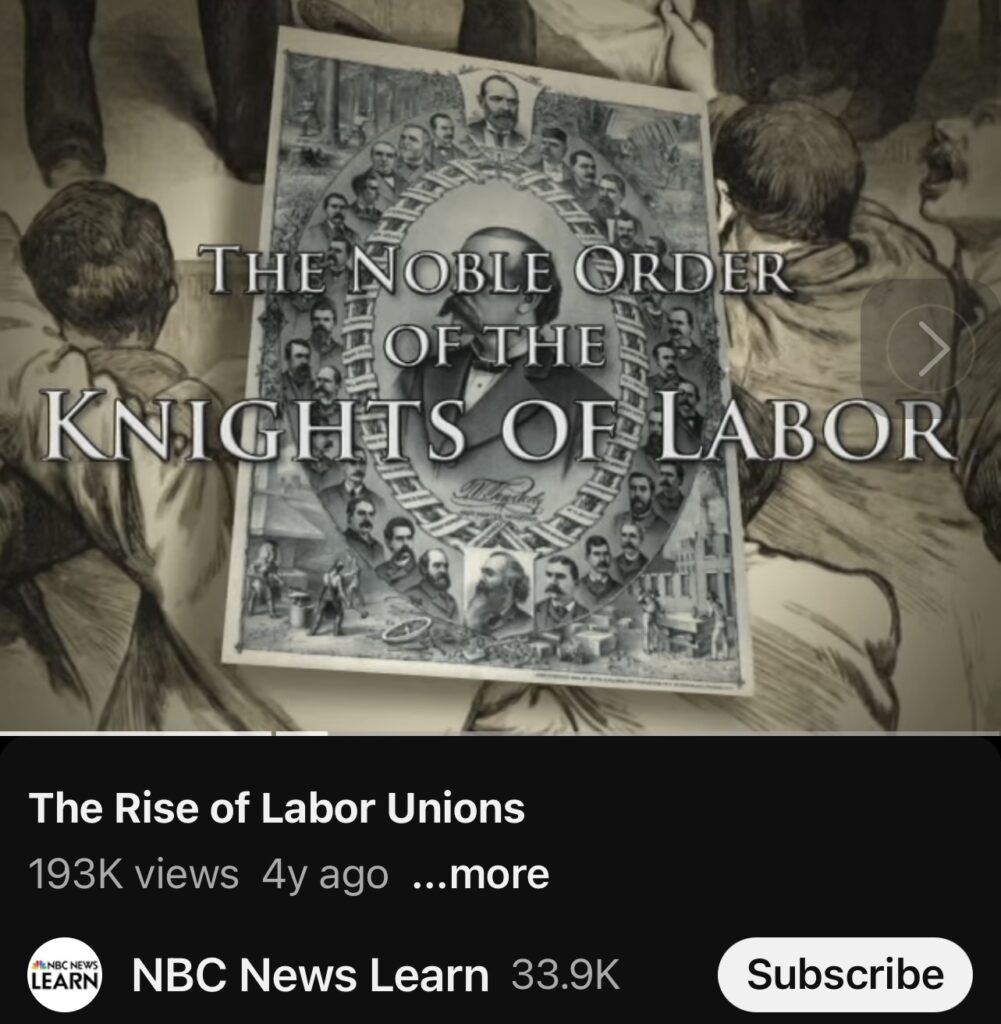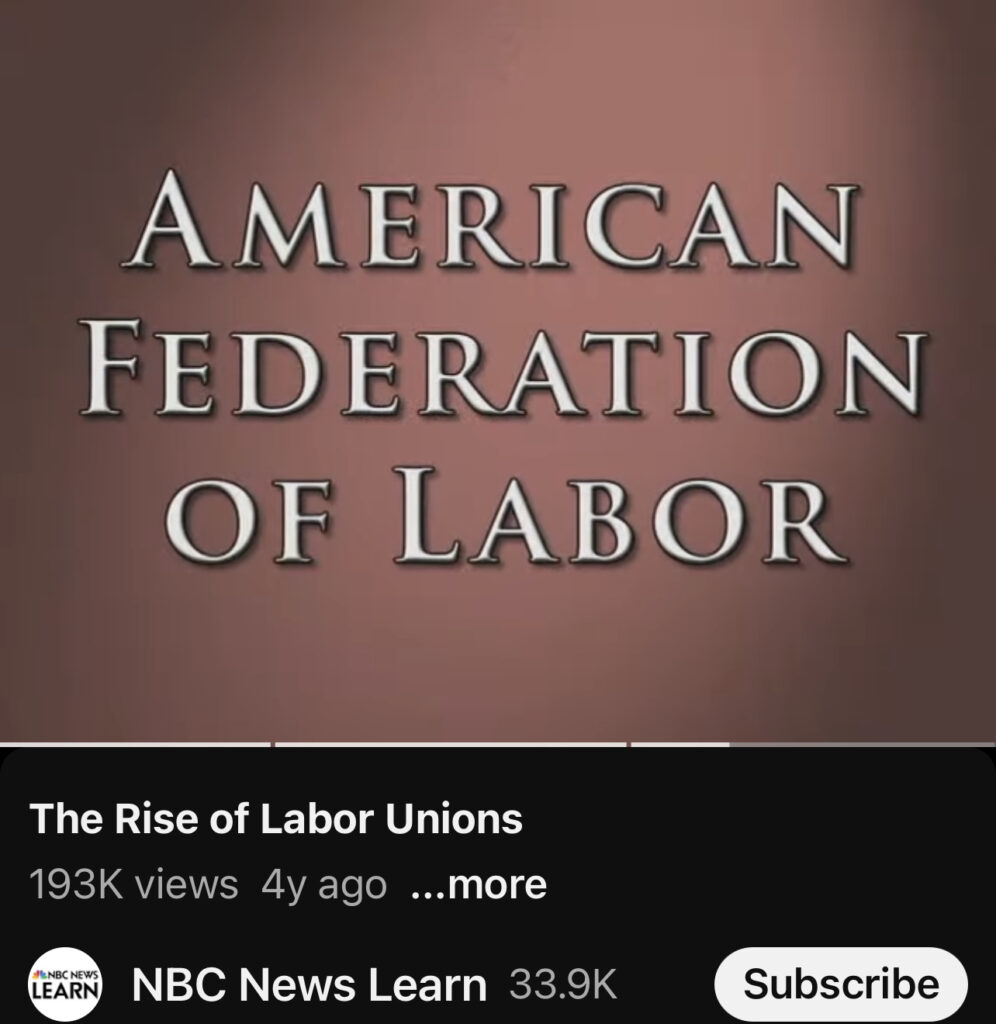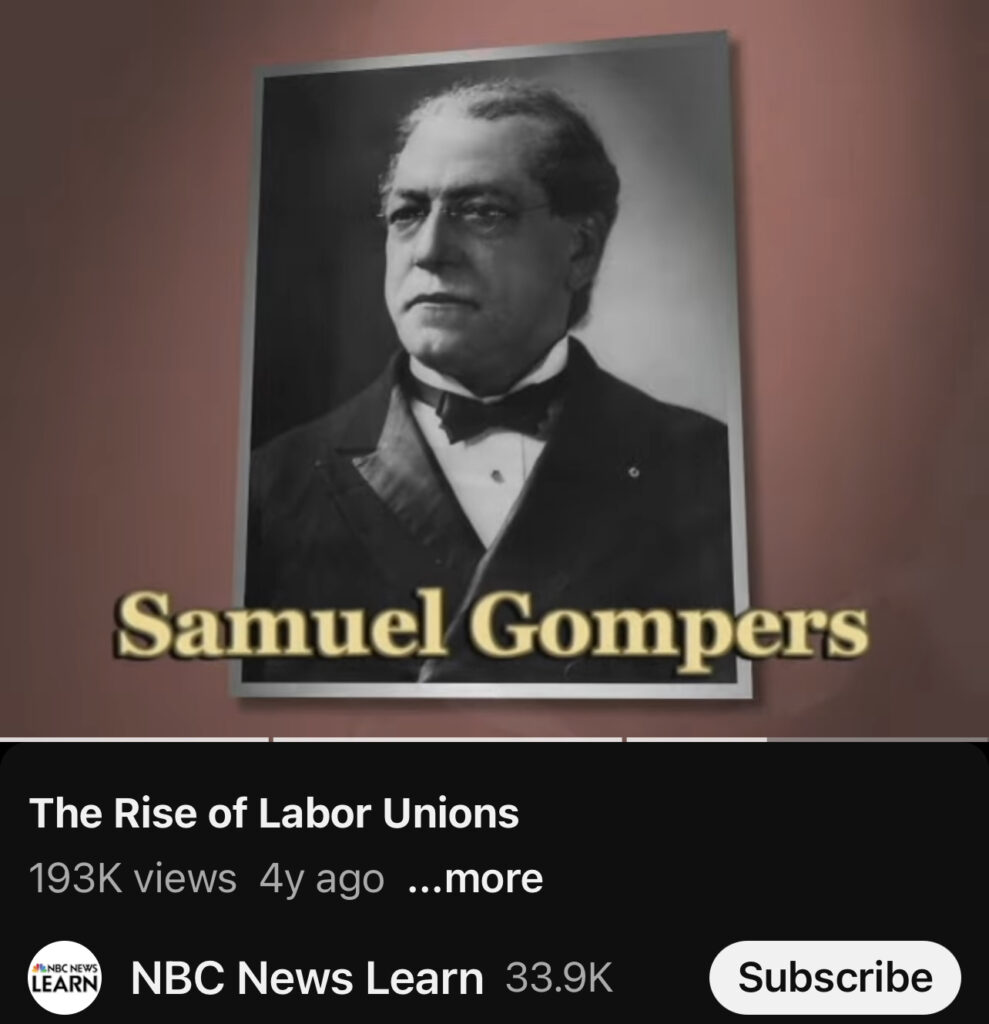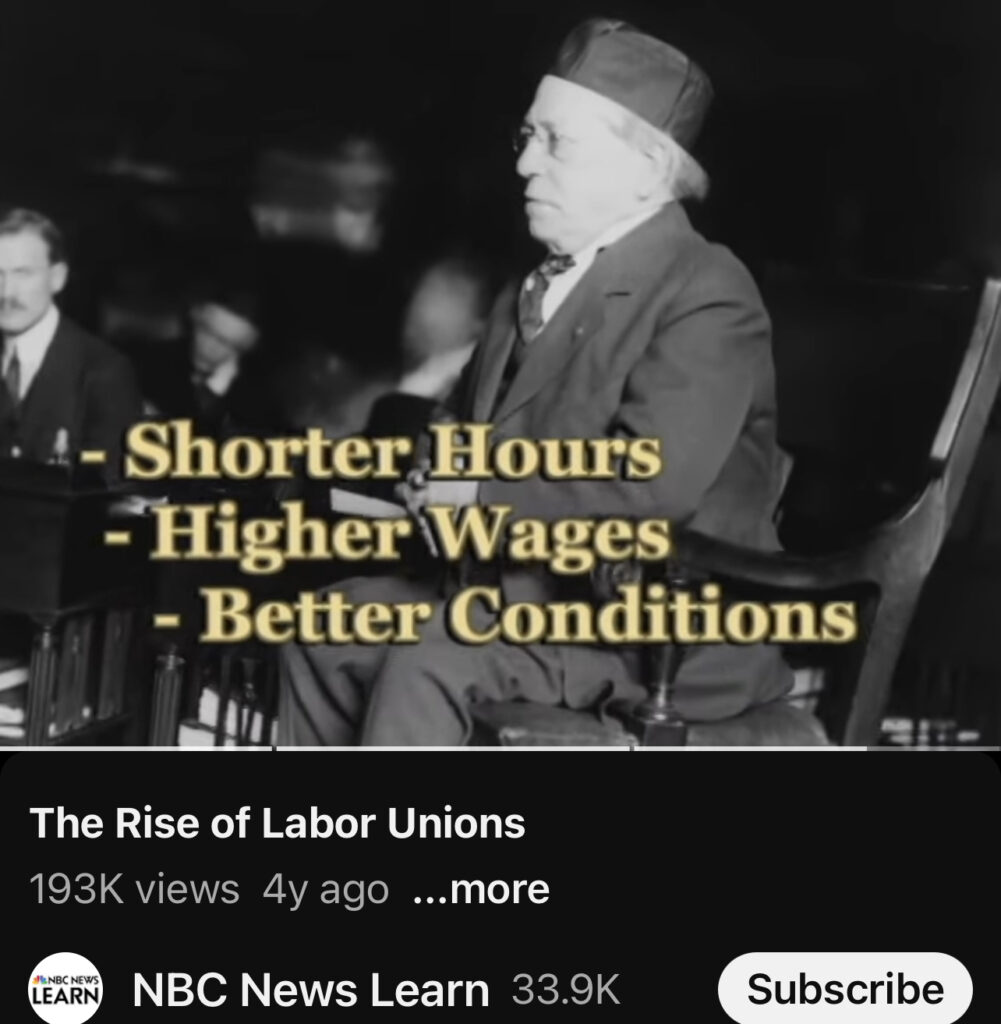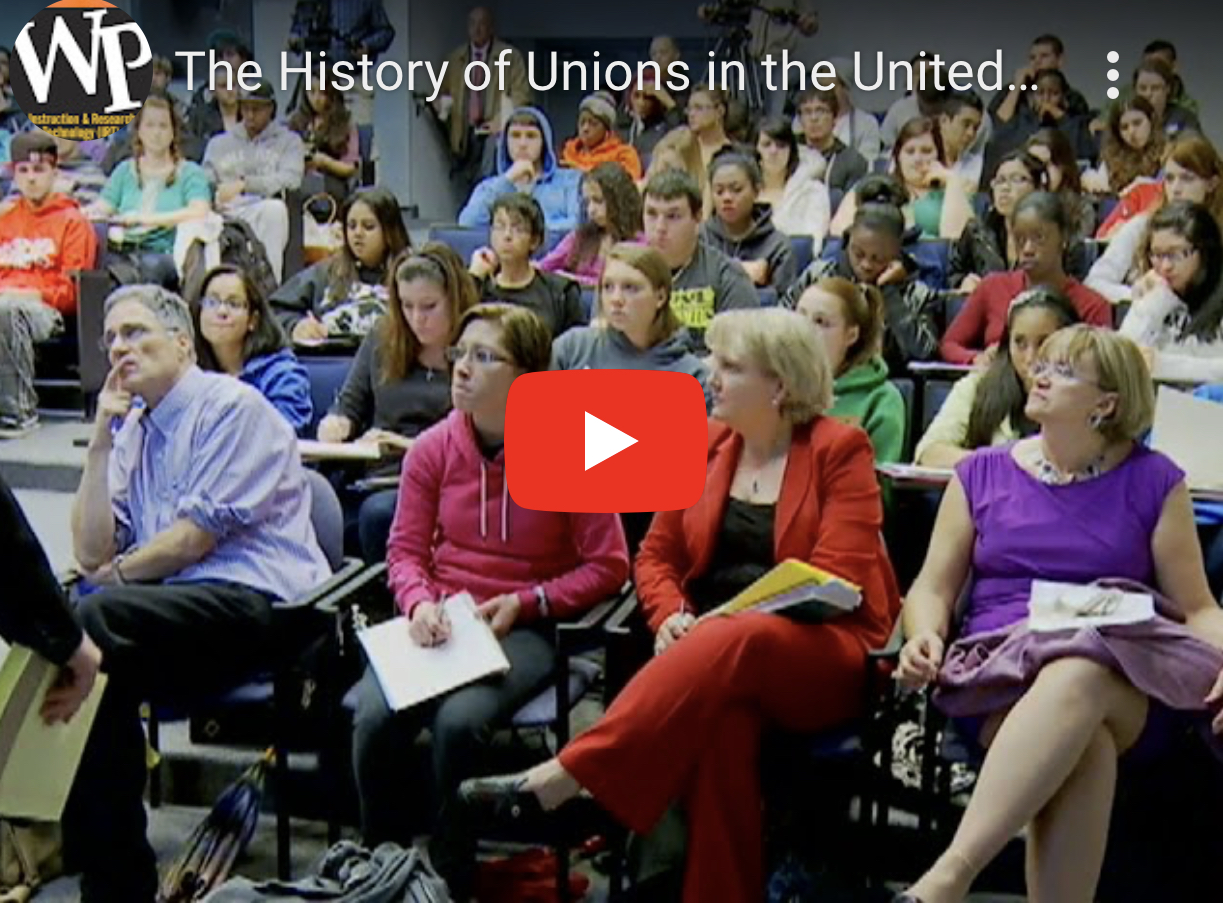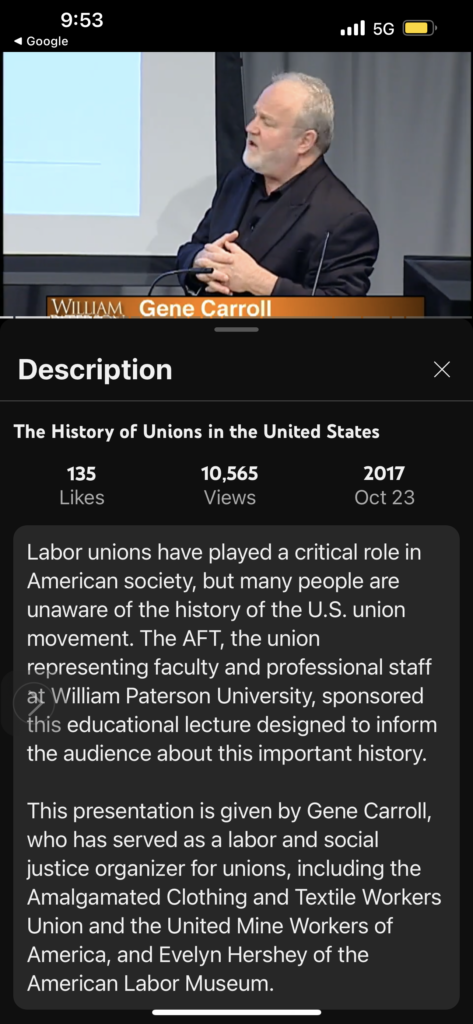
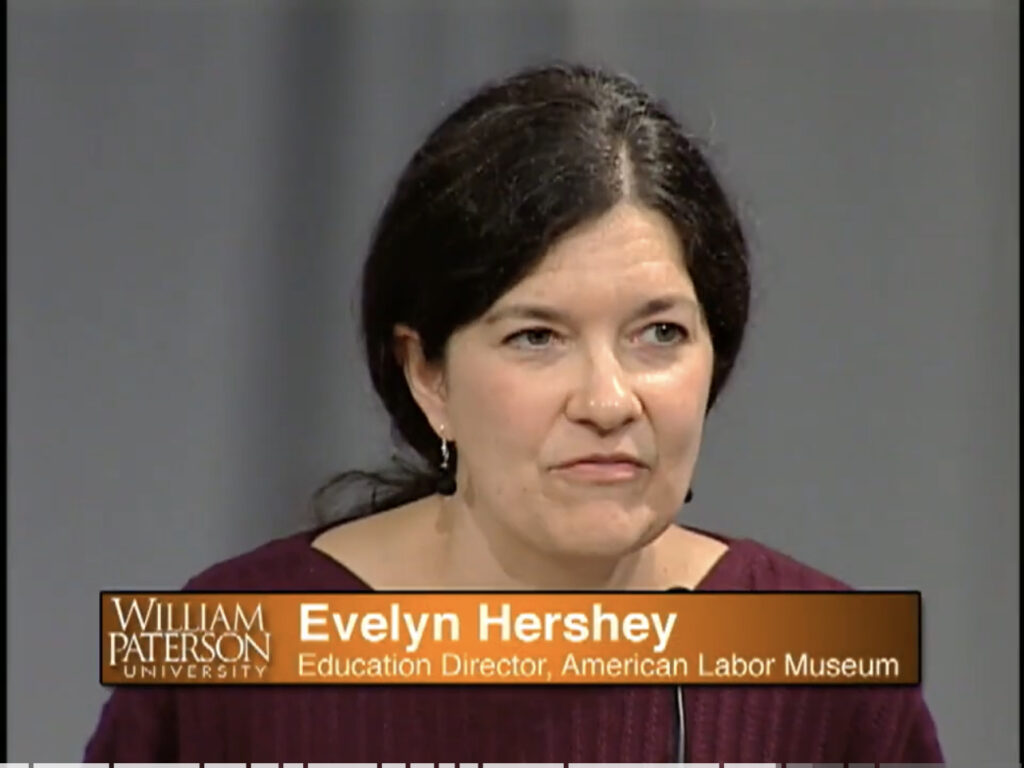
37:03 ~ National Labor Relations Act (103 million Americans could function under this act but only 6.9% are in Unions)
The National Labor Relations Act (NLRA), also known as the Wagner Act, is a foundational piece of U.S. labor law enacted in 1935. It protects the rights of employees to organize, engage in collective bargaining, and participate in activities related to improving working conditions. Here’s a detailed overview:
Purpose of the NLRA
The act was passed to address labor disputes and promote fair labor practices. It aims to:
1. Protect workers’ rights to unionize.
2. Promote collective bargaining as a means of resolving labor disputes.
3. Curtail unfair labor practices by employers.
4. Foster industrial peace and prevent strikes and disruptions.
Key Provisions
1. Right to Organize:
• Employees can form, join, or assist labor unions without interference or retaliation.
• They can engage in concerted activities for mutual aid or protection (e.g., strikes, protests).
2. Collective Bargaining:
• Employers are required to negotiate in good faith with a union representing employees.
3. Unfair Labor Practices (ULPs):
The NLRA prohibits certain employer and union actions. Examples include:
• Employers interfering with, restraining, or coercing employees in exercising their rights.
• Employers dominating or interfering with the formation or administration of any labor organization.
• Discrimination against employees for union activities.
• Retaliating against employees who file charges or testify under the NLRA.
4. National Labor Relations Board (NLRB):
• The NLRB is an independent federal agency created by the NLRA to enforce its provisions.
• It investigates charges of ULPs, oversees union elections, and ensures compliance with labor laws.
5. Employee Protections:
• Applies to most private-sector workers but excludes public-sector employees, agricultural workers, and independent contractors.
Amendments and Related Legislation
1. Taft-Hartley Act (1947):
• Amended the NLRA to balance power between labor and management.
• Restricted certain union practices, such as secondary boycotts and jurisdictional strikes.
• Allowed states to pass “right-to-work” laws, which prohibit mandatory union membership.
2. Landrum-Griffin Act (1959):
• Regulated union practices and aimed to prevent corruption and abuse in union management.
Impact of the NLRA
• Union Growth: The act enabled the rapid expansion of unions in the mid-20th century.
• Labor Dispute Resolution: It institutionalized mechanisms for resolving disputes without resorting to strikes.
• Workers’ Rights: It established protections that continue to underpin labor relations in the U.S.
Limitations and Controversies
1. Coverage Gaps:
• Does not apply to public-sector employees, agricultural workers, or independent contractors.
• Some gig economy workers are not protected under the NLRA.
2. Employer Retaliation:
• Critics argue enforcement is sometimes insufficient, leading to employer retaliation against union efforts.
3. Right-to-Work Laws:
• These state-level laws have weakened union membership and bargaining power in some states.
Modern Relevance
• The NLRA remains a cornerstone of labor law, but its provisions are frequently debated in light of evolving workplace dynamics (e.g., gig economy, remote work).
• Recent discussions about labor law reform have centered on expanding NLRA protections to excluded groups and strengthening penalties for violations.
(1898- Jim Crow)
The new deal presented by President Franklin D. Roosevelt.
Exclusions… agricultural workers are in the south, domestic workers in the south,
Labor relations systems1632
Unions are responsible for collective-bargaining
A union is an organized group of workers who come together to protect their collective interests and rights in the workplace. Unions are typically formed to improve working conditions, negotiate wages and benefits, ensure fair treatment, and provide a unified voice for employees in discussions with management or employers.
Key Features of a Union:
1. Collective Bargaining
Unions negotiate with employers on behalf of their members to create agreements regarding wages, benefits, working hours, safety standards, and other employment terms.
2. Representation
Unions represent workers in disputes with employers, including grievances related to unfair treatment, workplace safety violations, or other concerns.
3. Advocacy
Unions advocate for labor rights and policies that benefit workers, such as minimum wage laws, healthcare provisions, and better workplace protections.
4. Member Services
Many unions offer benefits to their members, such as legal assistance, educational opportunities, training programs, and pension plans.
5. Solidarity and Support
Unions foster a sense of community and shared purpose among members, enabling collective action to achieve workplace goals.
Police Unions
Police unions are a specific type of union that represents law enforcement officers. These unions focus on issues like:
• Negotiating salaries, benefits, and retirement plans for officers.
• Advocating for legal protections and due process rights.
• Supporting officers in disciplinary hearings and legal challenges.
• Lobbying for policies affecting law enforcement at local, state, and national levels.
Examples include the Fraternal Order of Police (FOP) and the Police Benevolent Association (PBA).
If you’d like further clarification or examples, let me know!
In the 19th century factories replaced farms as america’s industrial economy grew
Mills, mines and railroads were the labor of the day
1870 census
1880… industrialization was underwa1869 the noble order of the knights of labor
